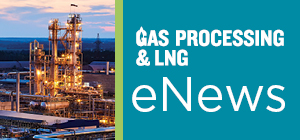Whitepapers

LNG liquefaction facilities present a unique opportunity to minimize greenhouse gas emissions. For both retrofits to existing plants and new-build plants, pre-combustion CO2 capture can significantly reduce the overall carbon footprint of LNG. This article examines how a proprietary approach to implementing and integrating pre-combustion capture can reduce the overall CO2 emissions from a liquefaction facility by more than 97%.
Download Whitepaper
The oil and gas industry has relied on analytical equipment such as gas chromatography to ensure product quality. A solid-state Raman spectroscopy system like the MarqMetrix All-In-One Process Raman Analyzer can speed up analysis, offer flexibility by measuring liquids and gases, and relieve some of the wear and tear on lab equipment required by relevant ASTM standards.
Download Whitepaper
The hidden dangers of corrosion under insulation (CUI) and chloride stress corrosion cracking (CSCC) are especially prevalent on assets used in the production of liquified natural gas. However, newer liquid coatings offer facilities the opportunity to mitigate corrosion far longer than previous options, helping owners extend coating maintenance schedules, reduce operational costs and enhance safety. Learn more about these advanced CUI-mitigation solutions in this informative paper.

Unlike pure refrigerants, condensation of mixed refrigerants against an ambient heat sink presents unique challenges. This whitepaper explores the care that must be taken in the condensing heat exchanger design and liquefaction process selection to ensure that both liquid and vapor phases remain in equilibrium as the mixed refrigerant condenses.
Download Whitepaper
Flow efficiency coatings are used exactly as they are named - to improve the flow against the natural textures on steel surfaces. This article provides insight on the impact, value and chemistry of flow efficiency coatings. It also offers how this coating reduces both operations expenses and up-front capital costs.
Download Whitepaper
LNG plants require cryogenic heat exchangers to liquefy natural gas with the two most common being coil wound heat exchangers (CWHE) and brazed aluminum heat exchangers (BAHX). This paper outlines the features of both types of heat exchangers and explains why CWHEs are the best choice for producing large quantities of LNG.
Download Whitepaper
With the availability of enhanced dual-layer coating systems that improve upon tried-and-true Abrasion-Resistant Overcoat (ARO) technology, pipeline owners and operators have a new viable option to protect their critical assets. These novel dual-layer systems feature enhanced moisture, gouge and impact resistance, while simultaneously having higher dielectric strength.
Download Whitepaper
New natural gas liquefaction projects require efficient, low CAPEX nitrogen removal options. Several practical options are described in this paper and each equipment arrangement offers unique benefits. It is critical to understand the benefits of these arrangements in order to develop a robust and reliable project selection.
Download Whitepaper
- Woodfibre LNG receives BCEAO order to move floatel to site to house non-local workforce
- QatarEnergy, Exxon seek to remove contractor from Texas gas project
- Veolia, Waga Energy and ENGIE collaborate to develop renewable natural gas industry in France
- Congo Brazzaville becomes an LNG exporting country
- Fulcrum LNG to pair with McDermott, Baker Hughes for Guyana gas project
- EU approves law to hit gas imports with methane emissions limit
- Veolia, Waga Energy and ENGIE collaborate to develop renewable natural gas industry in France
- Hawai'i Gas selects Eurus Energy America, Bana Pacific for hydrogen and renewable natural gas projects
- TotalEnergies increases LNG deliveries to Asia with two new contracts
- Desert Mountain Energy Corp. initiates helium production


